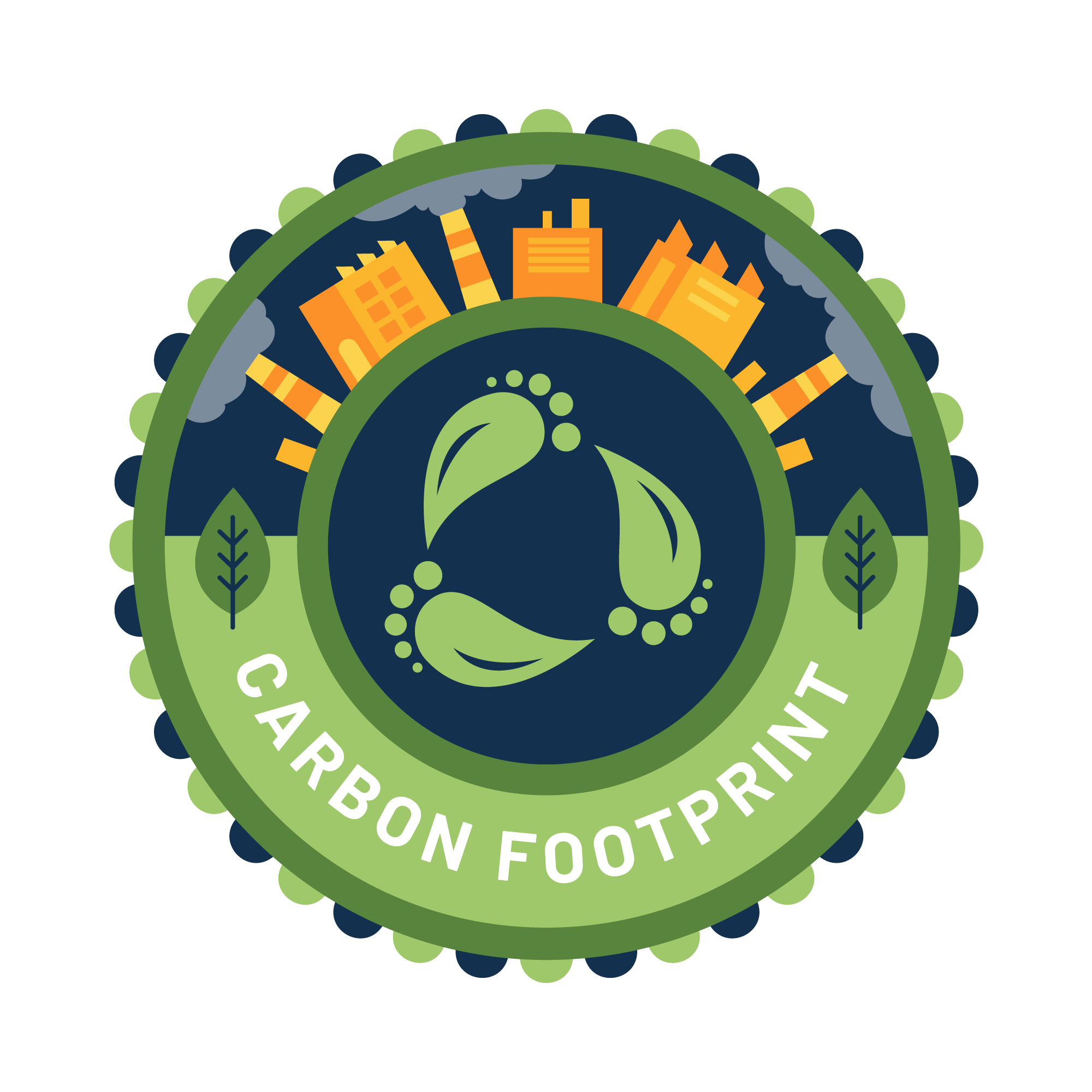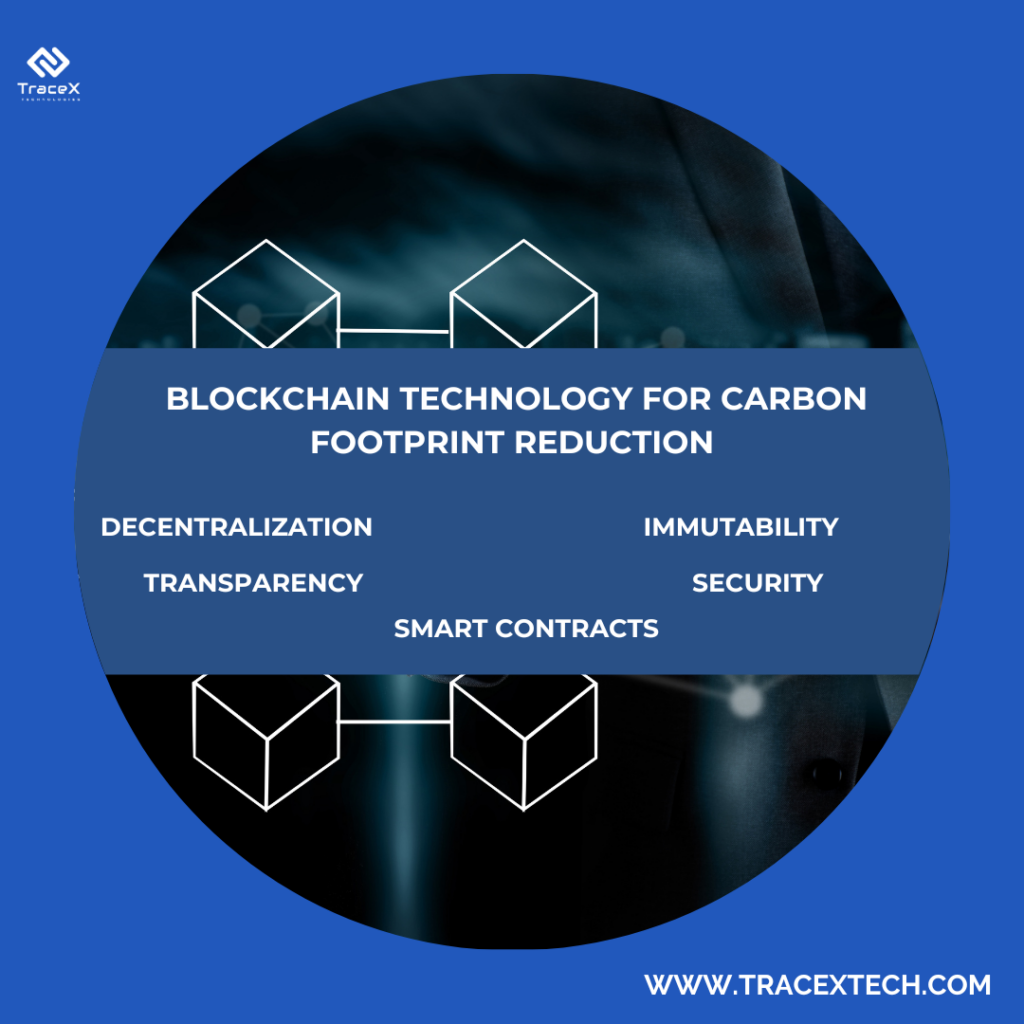Contact: +91 99725 24322 |
Menu
Menu
Quick summary: Learn how data management with blockchain technology can help reduce carbon footprints effectively. Explore the significance, challenges, and benefits of using TraceX DMRV solutions for carbon footprint reduction.

In a world increasingly concerned with environmental sustainability, the quest to reduce carbon footprints has become paramount. As industries grapple with the urgent need to curb greenhouse gas emissions, innovative solutions are emerging to tackle this global challenge. One such solution lies at the intersection of data management and blockchain technology.
Blockchain, originally conceived as the underlying technology for cryptocurrencies, has evolved into a versatile tool with applications across various sectors, including environmental conservation. Its decentralized nature, immutability, and transparency make it an ideal candidate for addressing complex issues like carbon emissions.
The carbon footprint measures the total amount of greenhouse gas (GHG) emissions associated with human production and consumption activities.
In the case of a business organization, it is the amount of GHG emitted directly or indirectly due to its daily operations.
This measure helps identify the individual GHGs from each activity within the supply chain process and the framework for assessing the cumulative total over the life stages of a product, from the production of raw materials used in its manufacture to the disposal of the finished product.
Carbon footprint is measured in terms of how many tons of carbon dioxide and other harmful gases such as methane, for example, are emitted per year. The larger the carbon footprint, the more GHGs a person, organization, event, or product release into the atmosphere, the leading cause of accelerated climate change.
Understanding carbon footprints is vital for assessing the environmental impact of human actions and addressing climate change. It provides a measurable indicator of how individual behaviour, industrial processes, and economic activities contribute to global warming and environmental degradation. By quantifying carbon footprints, individuals, organizations, and policymakers can make informed decisions to reduce emissions, mitigate climate change, and promote sustainability.
Data Collection: Accurate and comprehensive data on carbon emissions from various sources are essential for understanding the scale and sources of emissions and identifying opportunities for reduction.
Analysis and Reporting: Robust data management systems enable the analysis of carbon footprint data to identify trends, patterns, and areas for improvement. Reporting tools facilitate the communication of emissions data to stakeholders, regulators, and the public.
Decision-Making: Data-driven insights inform the development and implementation of strategies and policies to reduce carbon emissions, improve energy efficiency, and transition to renewable energy sources.
Monitoring and Verification: Continuous monitoring and verification of emissions data are necessary to track progress toward emission reduction goals, ensure compliance with regulations, and demonstrate environmental performance.
Transparency and Accountability: Transparent data management practices enhance accountability and trust among stakeholders by providing visibility into emissions data, methodologies, and mitigation efforts.
Effective carbon footprint reduction begins with accurate data collection and analysis to quantify emissions from various sources accurately. Data analysis helps identify emission hotspots and understand the relative contributions of different activities or sectors to the overall carbon footprint. By analyzing emissions data, organizations can set realistic reduction targets, prioritize mitigation efforts, and allocate resources efficiently. Regular monitoring and analysis of emissions data enable organizations to track progress towards reduction goals, assess the effectiveness of mitigation measures, and make informed adjustments as needed.
Sustainability through carbon traceability signifies a crucial step towards mitigating climate change and fostering environmental stewardship. By employing advanced technologies like blockchain, organizations can accurately track and manage their carbon emissions throughout the supply chain. TraceX offers comprehensive DMRV solutions that enable seamless carbon traceability, empowering businesses to monitor, report, and verify their sustainability efforts with precision. Through transparent data management and accountability, companies can take proactive measures to reduce their carbon footprints, contributing to a more sustainable future for generations to come.
Blockchain technology offers a decentralized and tamper-proof ledger that ensures the integrity and immutability of emissions data. Once recorded, emissions data cannot be altered or deleted, providing a trustworthy record of carbon footprint information.
Blockchain enables transparent and auditable data management, allowing stakeholders to trace the origin and lifecycle of emissions data from source to final destination.
Smart contracts on blockchain platforms can automate data collection, verification, and reporting processes, streamlining carbon footprint measurement and management.
Blockchain-based solutions facilitate secure and permissioned data sharing among stakeholders while protecting sensitive information through encryption and access controls.
By providing a shared and interoperable platform for data management, blockchain fosters collaboration among stakeholders, facilitating collective action to address carbon footprint challenges.

Blockchain can be used to securely store and manage emissions data, ensuring transparency, traceability, and integrity throughout the data lifecycle.
Blockchain-based platforms can facilitate the trading and tracking of carbon credits and offsets, enabling transparent and auditable transactions between parties.
Blockchain enables supply chain stakeholders to record and verify emissions-related data at each stage of the supply chain, promoting transparency and accountability.
Blockchain technology can support the integration of renewable energy sources into decentralized energy systems, facilitating peer-to-peer energy trading and emissions tracking.
Blockchain-based platforms can streamline climate finance and investment by providing transparent and secure channels for funding allocation and project tracking.
The role of Digital Monitoring, Reporting, and Verification (DMRV) in carbon data management is pivotal in ensuring accurate measurement, transparent reporting, and credible verification of carbon emissions and reduction efforts.
1. Data Collection and Aggregation: DMRV systems facilitate the collection of data related to carbon emissions from various sources, including industrial processes, energy consumption, transportation, and land use changes. This data is aggregated and organized in a structured format for analysis.
2. Data Quality Assurance: DMRV platforms ensure the quality and reliability of carbon data through rigorous validation processes. This involves verifying the accuracy, completeness, and consistency of data collected from different sources to ensure its integrity and reliability.
3. Carbon Accounting and Reporting: DMRV systems enable organizations to calculate their carbon footprint accurately based on standardized methodologies and emission factors. They provide tools for generating comprehensive reports that document emissions across different scopes and sectors, ensuring compliance with regulatory requirements and voluntary reporting initiatives.
4. Emissions Monitoring and Tracking: DMRV solutions offer real-time monitoring and tracking of carbon emissions, allowing organizations to identify emission hotspots, track progress towards reduction targets, and take corrective actions as needed. This visibility helps in optimizing resource allocation and implementing effective mitigation strategies.
5. Verification and Assurance: DMRV platforms facilitate independent verification of reported emissions data by accredited third-party auditors. This verification process enhances the credibility and trustworthiness of emission reduction claims, providing stakeholders with assurance that reported data is accurate and reliable.
6. Compliance and Transparency: DMRV systems help organizations demonstrate compliance with regulatory requirements and voluntary carbon reduction commitments. They promote transparency by providing stakeholders, including investors, customers, and the public, with access to verified emissions data and progress reports.
TraceX DMRV solutions are driving carbon management by revolutionizing the way organizations collect, analyze, report, and verify carbon emissions data. Through advanced data management capabilities, TraceX enables comprehensive tracking of carbon emissions across various sources and sectors, providing real-time insights into emission hotspots and trends. By leveraging blockchain technology, TraceX ensures the integrity and transparency of carbon data, enhancing its credibility and trustworthiness. This enables organizations to make informed decisions, implement targeted emission reduction strategies, and demonstrate compliance with regulatory requirements and sustainability goals. Ultimately, TraceX DMRV solutions empower organizations to drive meaningful progress towards carbon neutrality and environmental sustainability.
In conclusion, harnessing the power of data management with blockchain technology presents a promising pathway towards reducing carbon footprints and combating climate change. By adopting innovative solutions like TraceX DMRV, organizations can enhance the accuracy, transparency, and reliability of carbon data, enabling more effective carbon footprint measurement, tracking, and reduction strategies. Through collaborative efforts and leveraging cutting-edge technologies, we can pave the way towards a more sustainable future, where carbon emissions are minimized, and environmental stewardship is prioritized. Together, let us embark on this journey towards a greener and more resilient world for generations to come.
